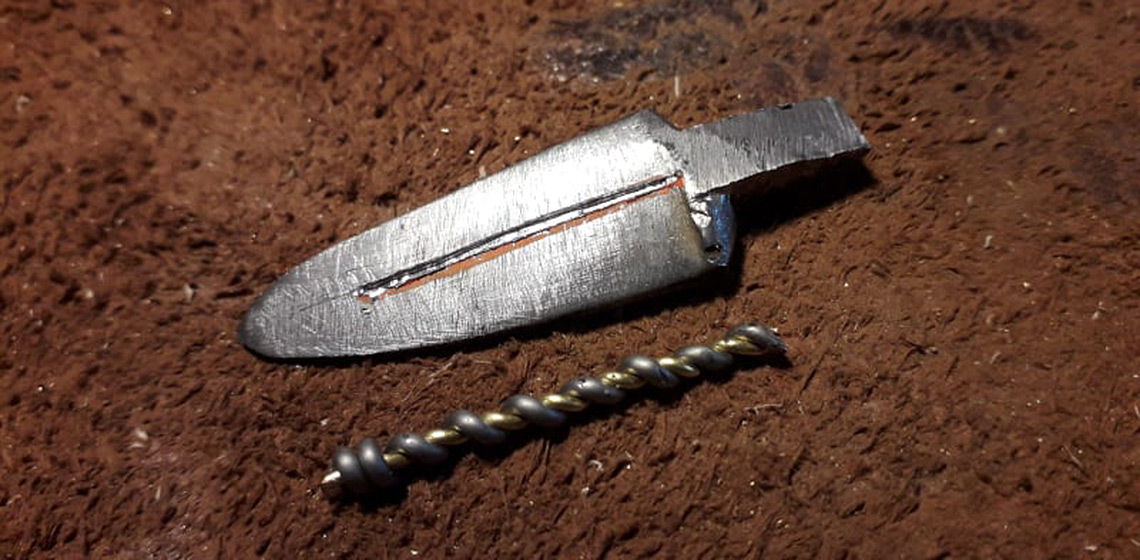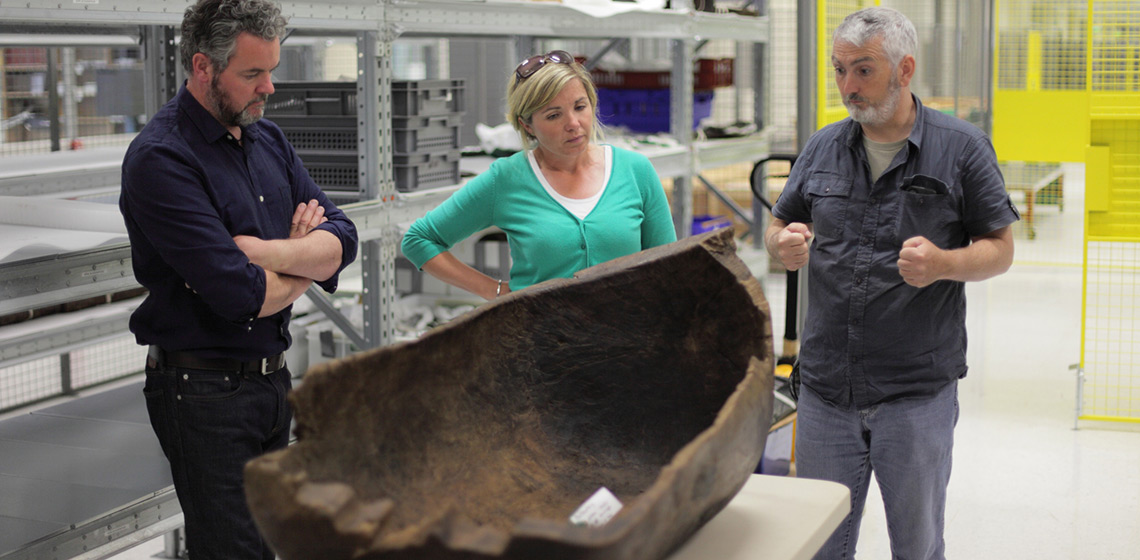(re)construction
Approaches to the Documentation of Houses in Open-Air Museums
Publication Date
The seminar was divided into two parts. One group professionally documented the long-term experiment “House 1” in the Museums Village Düppel for the first time. The house was built in the 1970s and left to decay in 1990. The area was freed from vegetation and photographed at regular intervals. The second group reflected on the continuous documentation of reconstructed houses in archaeological...
Alternative Reconstruction of a First Century AD Roman Cavalry Saddle
Publication Date
The reconstruction of a First Century AD Roman cavalry saddle has not been investigated since Peter Connolly introduced his ideas of a wooden tree saddle in 1984, based on the evidence and dimensions provided by archaeological finds of leather saddle covers and bronze saddle horn reinforcers. This alternative reconstruction, not using wood, was designed to...
The Story of your Site: Archaeological Site Museums and Archaeological Open-Air Museums
Publication Date
Archaeological site museums may not be that well defined worldwide, yet, they are found almost everywhere. Archaeological sites with reconstructed buildings based on archaeology however seem to be a younger phenomenon and are mainly concentrated in Europe, Japan and North America. Both types of museums however have old roots. Important is not so much the site per se, but the message...
Roar Ege: The Lifecycle of a Reconstructed Viking Ship
Publication Date
11th EAC Trento 2019
***In 1962, the remains of five late Viking Age ships were excavated from Roskilde Fjord, near Skuldelev on the Danish island of Zealand (See Figure 1: Crumlin-Pedersen and Olsen, 2002). Twenty years later, the Viking Ship Museum in Roskilde began the process of building its first full-scale Viking ship reconstruction, the 14 m long coastal transport and trading vessel, Skuldelev 3.
***In 1962, the remains of five late Viking Age ships were excavated from Roskilde Fjord, near Skuldelev on the Danish island of Zealand (See Figure 1: Crumlin-Pedersen and Olsen, 2002). Twenty years later, the Viking Ship Museum in Roskilde began the process of building its first full-scale Viking ship reconstruction, the 14 m long coastal transport and trading vessel, Skuldelev 3.
(De)constructing the Mesolithic. A History of Hut Reconstructions in the Netherlands
Publication Date
11th EAC Trento 2019
***The amount of reconstructions of huts from the Mesolithic period all over Northern Europe has boomed over the last 5 years, signaling a significant increase in scholarly interest. However, the scientific basis of these experimental reconstructions is often unclear. At the same time, the excavation and preliminary publication of two recently discovered Mesolithic huts in the Netherlands indicate structures of a completely different build than the proposed reconstructions...
***The amount of reconstructions of huts from the Mesolithic period all over Northern Europe has boomed over the last 5 years, signaling a significant increase in scholarly interest. However, the scientific basis of these experimental reconstructions is often unclear. At the same time, the excavation and preliminary publication of two recently discovered Mesolithic huts in the Netherlands indicate structures of a completely different build than the proposed reconstructions...
Experimental Research on the Setting up and Exploitation of the Human Prehistoric Habitat in the Middle Dniester Region
Publication Date
The research of archaeological monuments in the Middle Dniester basin over the last two decades has highlighted a series of new data on the evolution of human communities during the first Iron Age (8th to 10th centuries BC), demonstrating the advanced level and original character of Cozia-Saharna communities (Каshuba, 2000; Niculiţă and Nicic, 2002; Niculiţă, et al., 2003; Niculiţă and Nicic, 2007; Niculiţă, Zanoci and Arnăut, 2007; Zanoci and Băţ, 2007; Kašuba, 2008, p.40; Niculiţă and Nicic, 2008; Niculiţă, et al., 2008).
Reaching Out to the Communities We are Here to Serve: Developments at the Scottish Crannog Centre
Publication Date
The Scottish Crannog Centre is a small archaeological open-air museum on Loch Tay in Perthshire. It originally operated as a visitor attraction, giving people a glimpse into life in the Early Iron Age through demonstrations of ancient skills and guided tours of a reconstructed crannog – loch dwelling – based on discoveries and excavations made by the Scottish Trust for Underwater Archaeology...
Stone & Metal: Experimental reproduction of a stone monument of the Metal Age, Located between Liguria and Tuscany (Italy)
Publication Date
11th EAC Trento 2019
***The Italian region of Lunigiana, is located between Liguria and Tuscany, and is rich in stone statues which were worked from the third millennium B.C. until the beginning of the historical period, around the 6th century B.C. (Anati, 1981). Eighty statues have been collected and show stylized male and female characters...
***The Italian region of Lunigiana, is located between Liguria and Tuscany, and is rich in stone statues which were worked from the third millennium B.C. until the beginning of the historical period, around the 6th century B.C. (Anati, 1981). Eighty statues have been collected and show stylized male and female characters...
Replica of the Knife 2165 found in Flixborough a Late Anglo-Saxon Period Knife with an Inlay of Twisted Bronze and Silver Wires
Publication Date
This work aims to show the reconstruction of a medieval era knife that was found in Flixborough, Lincolnshire (UK). Flixborough’s Anglo-Saxon cemetery has returned a total of 11 knives that can be dated between the 8th and the 10th century AD. The specimen discussed here is known as Knife 2165 and was found in context 3417 of the site. This knife is the smallest of the inlaid knives found in Flixborough...
Making, Multi-Vocality and Experimental Archaeology: The Pallasboy Project
Publication Date
This paper outlines The Pallasboy Project, which set out to craft a replica of the eponymous Irish Iron Age wooden vessel. We consider the process and progress of the project, as it developed in a number of slightly unusual directions. The paper includes a description of the experimental work, alongside personal reflections and comments by...










